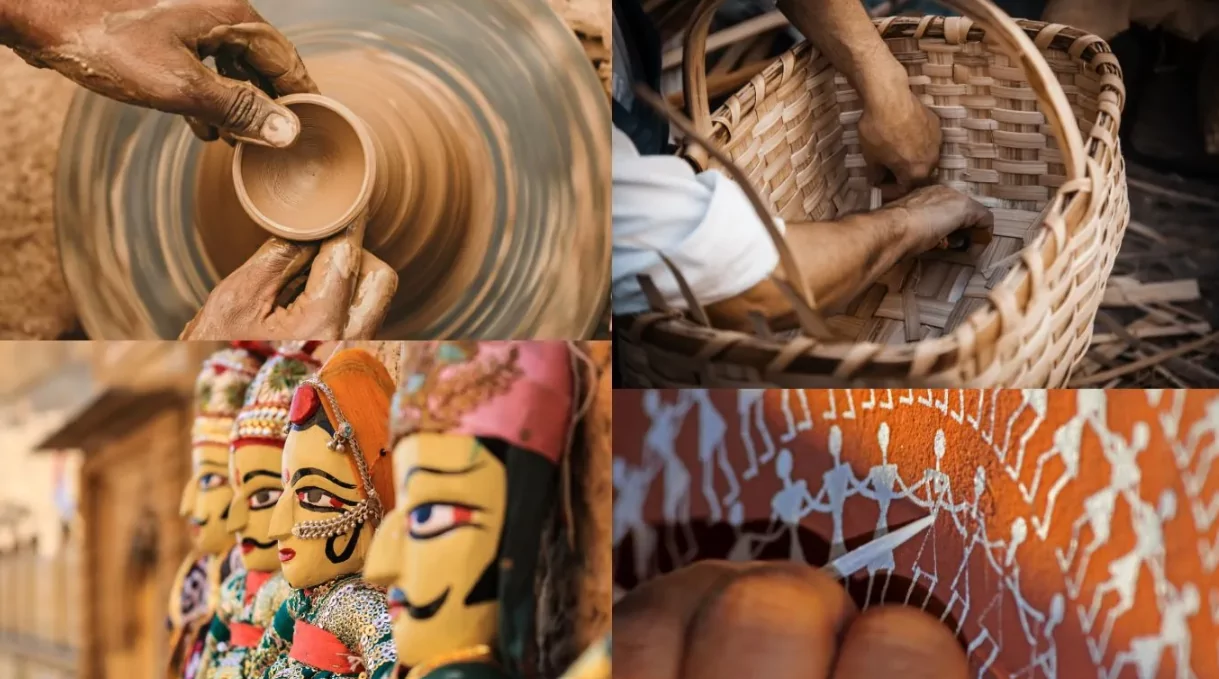Psychology of Gond art
One of the biggest tribal populations in India practices gond art, a type of tribal community art, in Madhya Pradesh. Their paintings are highly distinctive because of their vivid dots and striking geometric lines. Vibrant colours like yellow, orange, red, blue, and green are highly favoured by Gond artists.
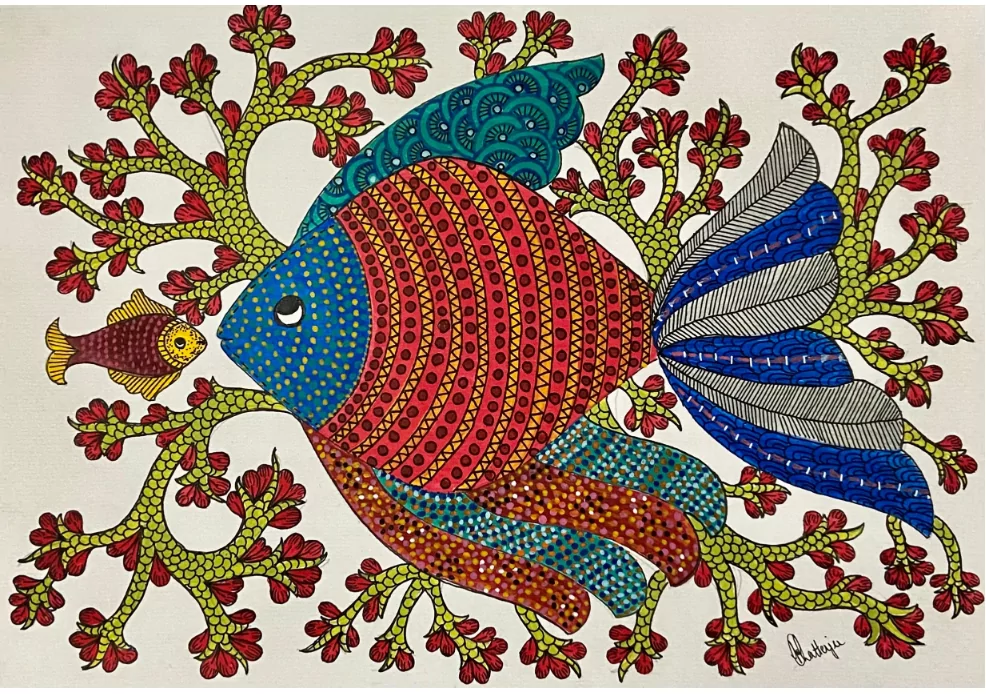
Significant characteristics of this era were their intense animism and belief in supernatural forces connected to nature, which led them to worship nature as a religion. Their language is comprehensible and bears strong similarities to the Dravidian language family in terms of spelling and pronunciation. At this point, their way of life was quite homogeneous and there had been few noticeable changes to their culture or social structure.
Features and in-depth Gond art
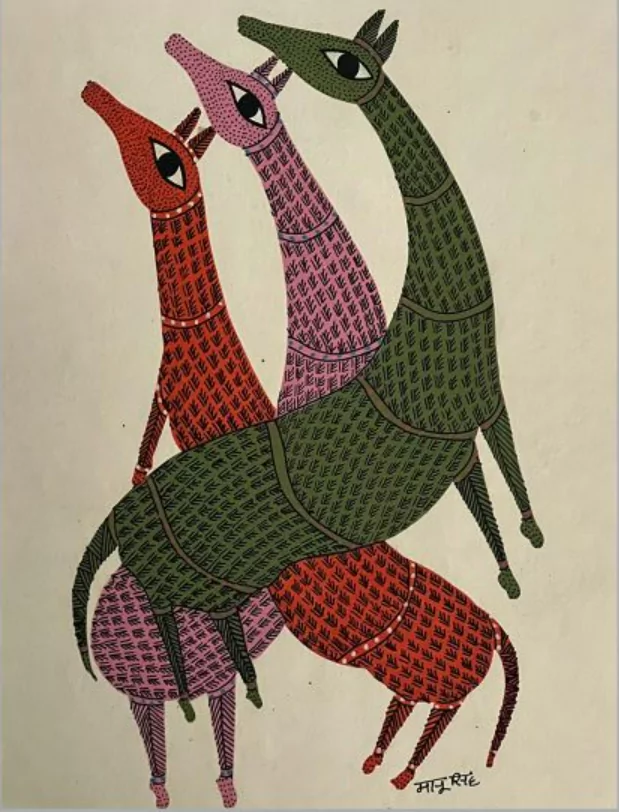
These artists developed a new visual language by giving their myths, stories, fables, tattoos, and music tangible visual forms that were previously unknown to the “mainstream” public. The historically marginalised acquired traction and ground in the national narrative during this paradigm-shifting cultural upheaval, and creative energy skyrocketed as individualism emerged in a society that had been traditionally collective. Transcribed from oral histories, images emerged as flying snakes, birds, or sprouting trees that moved in a variety of inventive ways to the beat of the song.
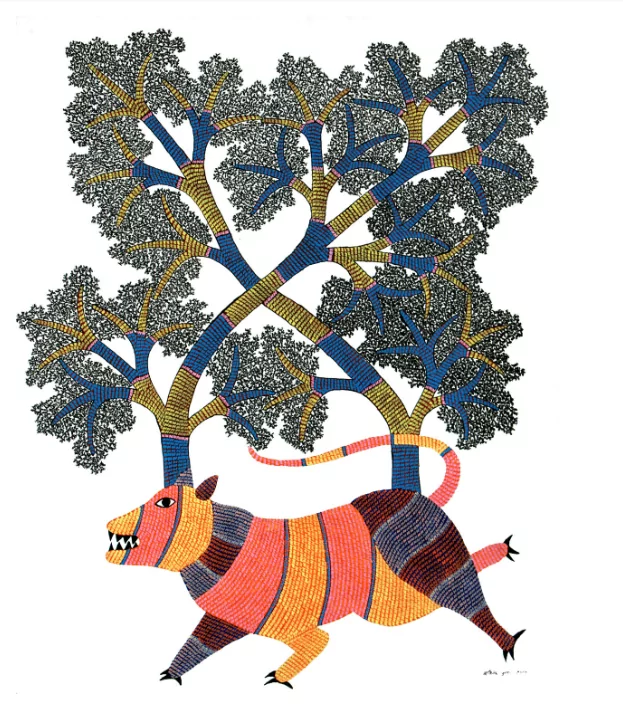
Over the years, the Gond artists have developed their own devices to work with various contemporary mediums and materials. They would first make dots and calculate the volume of the images. These dots would be connected to bring about an outer shape, which would then be filled with colours. As they respond to the immediate social situation and environment, each object they come across in life is aesthetically transformed.

Image source: Dastkari Haat
Gond art contributing to Contemporary fashion
Although the times have changed, the tradition hasn’t. We find new alternatives and mediums to keep the tradition alive. In a way, fashion paved the way for Gond art in the modern era. Fashion is an ever-changing and fast-paced industry, it is applauding how artistic designers have added Gond art in nearly everything and how art can bring life to anything.
Wild Child by SAAJ- Ankita

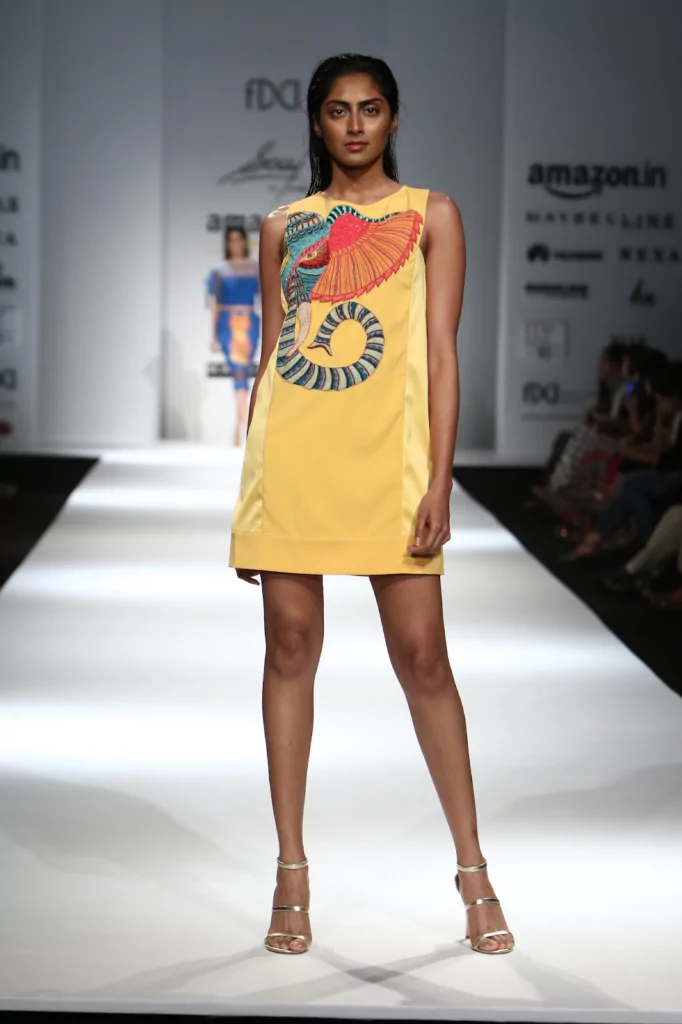
In Ankita’s words, “We had been studying “Gond-Art” for a while and we developed our embroideries on the lines of this ancient art. Gond-Art is one of the oldest art forms of India. What intrigued me most about it was how it depicted the relationship of man with nature, the bright colours and raw drawings.”
The SHIVAN & NARRESH Koi Series
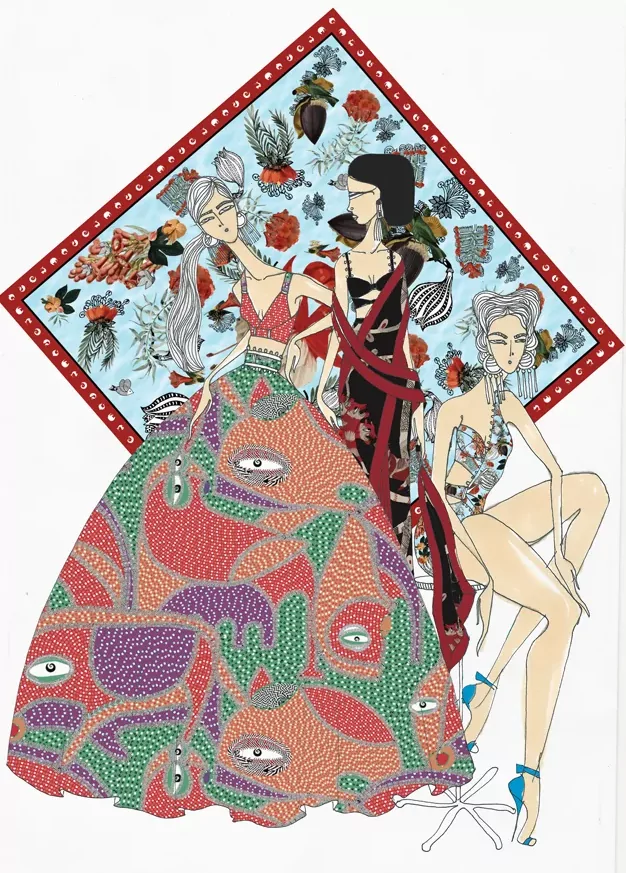
The Koi Series captures the finer nuances of Gond art from Madhya Pradesh and coalesces it with colour inspiration from the spice markets of Istanbul, both of which were discovered by us on our recent travels. “This collection is a way to marry the Indian art form with fashion and make it relevant for the globetrotting millennials. It is reflective of the non-conformism of the generation today, always on the lookout for innovative cultures and experiences.”, said Shivan and Narresh.
Image source: Arjun Mark
The effortless amalgamation of these contrasting design aesthetics initiates the foundation for the new collection inspired by the universes of travel and art. The Gond art of Madhya Pradesh is an art form that originated in the 19th century. It features paintings by the Gond or the eponymous Koi tribal community of the geography.
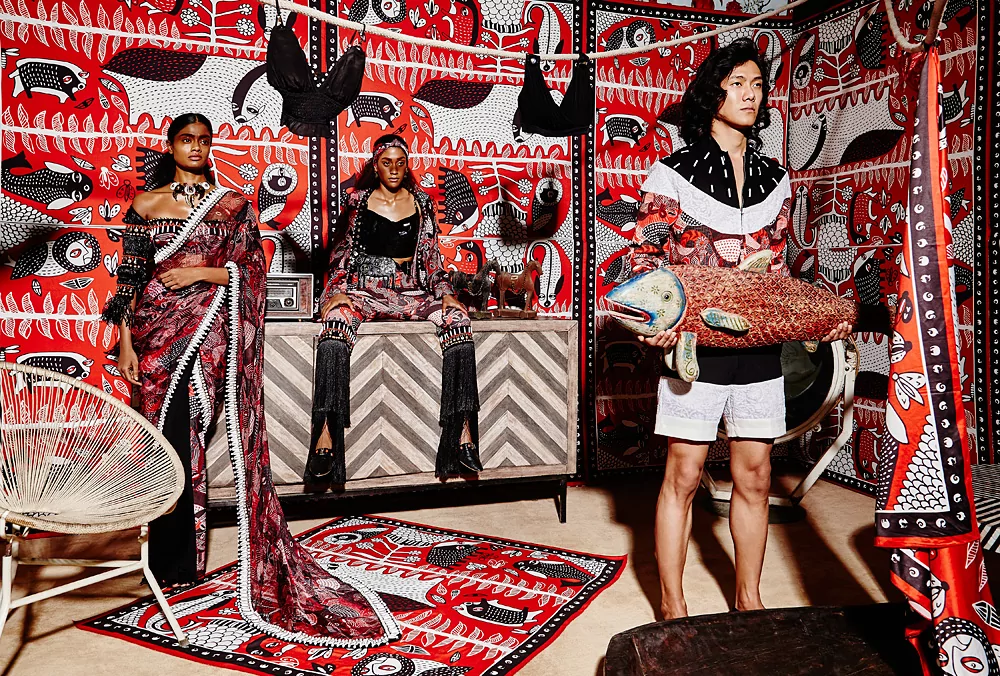
Image source: Arjun Mark
Known for its meticulous detailing, colour abundance and mystical artistic psyche, the art form is reflective of the relationship of man with nature. While turning to Hindu legends and mythologies for inspiration. Characterised through decorative motifs, the patterns arranged through dots, dashes, lines and circles are known to add a sense of movement to the still images.
Making it a testament to the adaptability and versatile nature of historic art forms that beckon contemporary renditions time and time again.
Conclusion
By highlighting an important aspect of our heritage, these artists are making people around them more conscious while also helping the art stay alive. Their projects are not only putting the spotlight on the craftsmanship but also on the craftspeople and their places of origin. Although many designers have used Madhubani and Kalamkari, folk art has served as a source of inspiration for Indian designers over the years. Nonetheless, the use of folk art in India has never been more widespread.
So what’s different now? The fact that traditional art designs are now potentially available to a larger urban market is what improves the current run. Nonetheless, it will be interesting to see how far this trend takes off.
To learn more about art forms, download the Rooftop app from the App Store or Google Play to stay updated on our upcoming art events and workshops.
By Soumya Kotian



